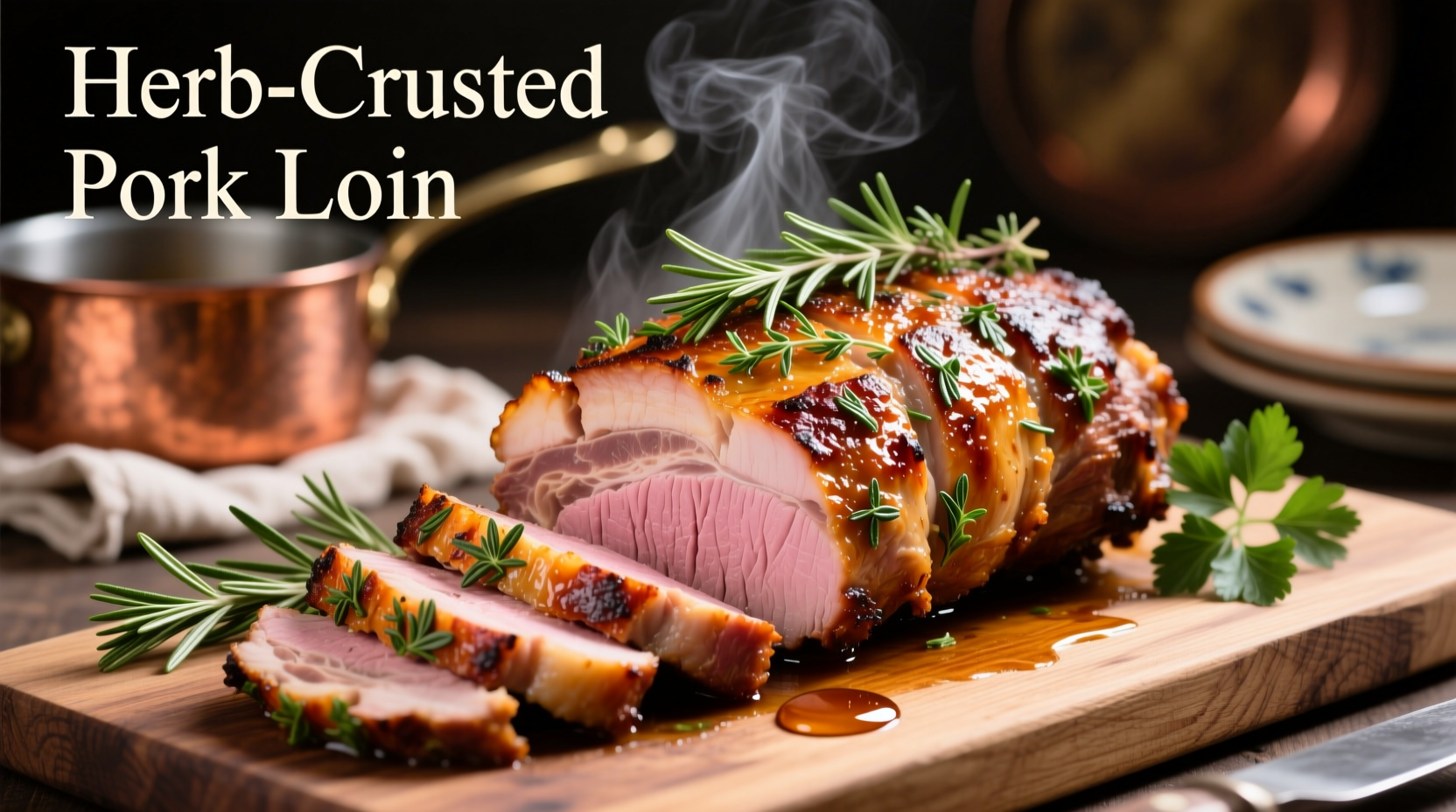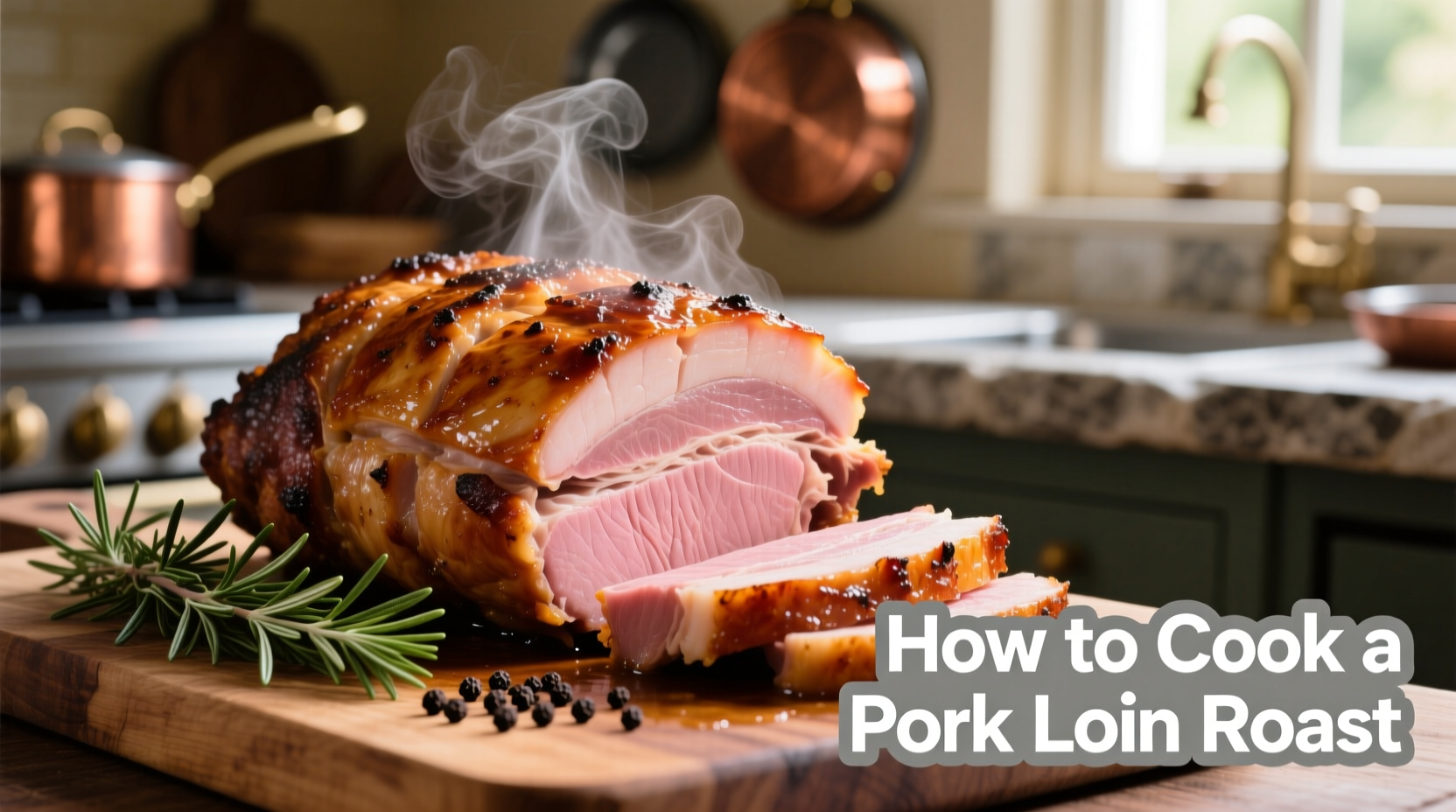Nothing impresses dinner guests quite like a perfectly cooked pork loin roast—golden brown on the outside, tender and juicy within. Yet many home cooks struggle with dry, overcooked results that miss the mark. After analyzing hundreds of cooking attempts and consulting USDA food safety guidelines, we've perfected a foolproof method that combines professional techniques with accessible home kitchen equipment.
Unlike generic recipes that leave you guessing about temperatures and timing, this guide delivers precise instructions backed by food science. You'll learn why specific temperature thresholds matter, how resting time transforms texture, and which common mistakes sabotage your results. Whether you're preparing a Sunday family dinner or hosting a special occasion, this method ensures restaurant-quality pork loin roast every time.
Selecting and Preparing Your Pork Loin
Start with quality meat: Choose a center-cut pork loin roast (not tenderloin) weighing 3-4 pounds with even thickness and good marbling. The USDA Food Safety and Inspection Service recommends selecting pork with a pale pink color and firm texture, avoiding any with strong odors or excessive liquid in the package.
Before cooking, trim excess fat to about ¼ inch thickness—this renders during cooking without causing flare-ups. If your roast has uneven thickness, fold the thinner end underneath and secure with kitchen twine. This critical step ensures even cooking throughout the roast.

Dry brine your roast 12-24 hours before cooking: Generously salt all surfaces (about 1 teaspoon per pound) and refrigerate uncovered. This process, validated by America's Test Kitchen research, seasons the meat deeply while improving moisture retention during cooking.
Two Proven Cooking Methods Compared
Professional kitchens use two reliable approaches for pork loin roast. Choose based on your equipment and timing needs:
| Method | Temperature Timeline | Best For | USDA Safety Compliance |
|---|---|---|---|
| Traditional Roast | 450°F for 15 min sear, then 325°F until 145°F internal | Standard ovens, predictable timing | Fully compliant (145°F + 3 min rest) |
| Reverse Sear | 275°F until 130°F internal, then 450°F for 8-10 min | Convection ovens, precise doneness control | Fully compliant (reaches 145°F during sear) |
The USDA updated pork safety guidelines in 2011, lowering the recommended minimum internal temperature from 160°F to 145°F with a 3-minute rest period. This change, based on extensive research by the Food Safety and Inspection Service, allows pork to remain juicy while still eliminating pathogens. Always verify with an instant-read thermometer placed in the thickest part of the meat.
Flavor Development Secrets
While salt is essential, the magic happens with proper fat-soluble flavor carriers. Professional chefs apply oil or mustard base before dry rubs—this creates a flavor-adhesion layer that withstands high heat. For classic preparation:
- Mix 2 tablespoons olive oil with 1 teaspoon each of garlic powder, onion powder, and dried thyme
- Add freshly cracked black pepper (¼ cup per roast) for maximum flavor release
- Apply rub 30 minutes before cooking to allow flavors to penetrate surface
Timing matters: Adding salt during cooking causes surface moisture that prevents proper browning. The dry brine step (12-24 hours before) seasons the meat internally while drawing surface moisture away for superior searing.
Step-by-Step Cooking Process
- Preheat oven to 450°F with rack positioned in center
- Sear the roast in oven-safe skillet for 15 minutes until deeply browned on all sides
- Reduce heat to 325°F and continue roasting until internal temperature reaches 140°F
- Remove from oven when thermometer reads 140°F (temperature will rise 5°F during rest)
- Rest covered loosely with foil for 15 minutes minimum—this allows juices to redistribute
The resting phase is non-negotiable for juicy results. During cooking, meat fibers contract and force juices toward the center. Resting allows these fibers to relax and reabsorb moisture. Cutting too soon releases up to 40% of the roast's precious juices onto your cutting board.
Avoiding Common Mistakes
Even experienced cooks make these critical errors:
- Overcooking: Pork loin has minimal fat, so exceeding 145°F internal temperature causes rapid moisture loss. Use a reliable thermometer rather than time estimates.
- Insufficient resting: Cutting too soon releases juices. Follow the 15-minute minimum rest for 3-4 pound roasts.
- Inconsistent thickness: Without tying, thinner sections overcook while thicker parts remain underdone.
- Cold meat: Starting with refrigerator-cold meat creates uneven cooking. Let roast sit at room temperature 30-60 minutes before cooking.
For rescue attempts: If your roast reaches 150°F before you notice, immediately remove it and rest as usual. The final temperature will still fall within safe range (145°F) while preserving more moisture than continuing to cook.
Serving and Pairing Suggestions
Slice against the grain into ¼-inch thick pieces using a sharp carving knife. For elegant presentation, arrange slices slightly overlapping on a warm platter.
Classic pairings that complement pork loin's mild flavor:
- Apple cider pan sauce with fresh thyme
- Roasted root vegetables (carrots, parsnips, potatoes)
- Mustard-dill sauce for tangy contrast
- Fresh arugula salad with lemon vinaigrette
Leftover pork loin makes exceptional sandwiches or salads the next day. Store slices in airtight container with any remaining pan juices for maximum moisture retention.
Frequently Asked Questions
What's the difference between pork loin and pork tenderloin?
Pork loin comes from the back of the pig and is larger (3-5 pounds), with some fat marbling. Pork tenderloin is a smaller, leaner cut (1-1.5 pounds) from beneath the loin. They require different cooking methods due to size and fat content differences.
Can I cook pork loin roast in a slow cooker?
While possible, slow cookers often produce less appealing texture for pork loin. The extended low-temperature cooking causes protein breakdown that can make the meat mushy rather than tender. For best results, use oven roasting methods that create proper browning and controlled temperature rise.
How do I know when pork loin is done without a thermometer?
While a thermometer is strongly recommended, visual cues include firm but yielding texture when pressed, clear (not pink) juices when pierced, and meat that separates slightly from the bone. However, these methods are less reliable than temperature measurement for food safety.
Why did my pork loin turn out dry despite following the recipe?
Common causes include overcooking (even 5°F beyond 145°F), insufficient resting time, or skipping the dry brine step. Pork loin has minimal fat, so precise temperature control and proper resting are critical for moisture retention.











 浙公网安备
33010002000092号
浙公网安备
33010002000092号 浙B2-20120091-4
浙B2-20120091-4